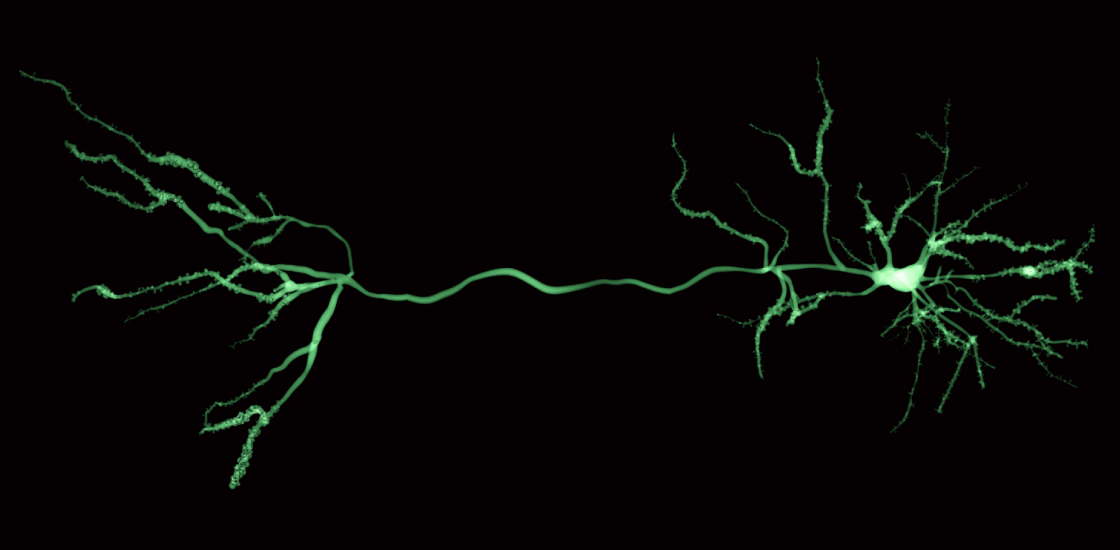Brain activity modulates the expression of autism-linked genes in some human neurons, according to a new study. The findings could help to explain how genetic variants linked to autism factor into brain development.
“As far as I know, this is one of the first papers that looks at human neurons and assesses their regulatory elements and what they bind at the transcription-factor level,” says Michael Greenberg, chair of neurobiology at Harvard University.
When neurons fire, they start to express certain genes at higher levels. These activity-dependent genes help the developing brain mold itself in response to its environment. Most studies of these genes are conducted in mouse models, but human brain development differs radically from that of mice, and the two species’ genomes differ extensively as well — especially in noncoding regions, which help govern gene expression.
To overcome these limitations, Greenberg and his colleagues turned to human neurons, grown in a dish from induced pluripotent stem cells, and chemically activated them. They cataloged changes in the expression of some genes and identified noncoding DNA segments and proteins that may have helped to drive those changes. These drivers, the team found, appear to be linked to autism heritability.
“We’re taking our first steps into the human brain this way,” Greenberg says. “We have a network, and we’ve identified some things that are new, and there’s a long way to go.”
Enhancing expression:
Greenberg and his colleagues started by characterizing the neurons’ gene-expression patterns at rest. A large number of the cells resembled inhibitory neurons in the striatum, a brain region involved with movement, decision-making and reward-based learning. Most inhibitory neurons dampen the activity of other neurons via the chemical messenger gamma-aminobutyric acid (GABA).
The team activated these GABAergic neurons and produced a list of the genes that changed expression — many of which, it turned out, are strongly linked to autism, including SHANK3 and FMR1. Their findings appeared in February in Nature Neuroscience.
“They are showing that [activity-dependent gene expression] is an important piece of what we have to understand in order to understand the more general etiology of autism,” says Michael Nestor, scientific engagement lead at JLABS@Washington, DC, one of Johnson & Johnson Innovation’s science incubators, and a former autism researcher, who was not involved in the work.
To uncover the mechanisms underlying these changes, the team screened the activated neurons for tags on histones — the proteins that DNA coils around. When genes are activated, the tags get added along specific short strips of noncoding DNA called promoters and enhancers.
Enhancers are located far from the genes they interact with, and they play an important role in cell-type-specific gene expression. By contrast, promoters, which lie where the transcription of a particular gene begins, can affect expression across different cell types.
Greenberg says he expected to find overlap between autism-linked genes and activated enhancers. Instead, he and his team found overlap with activated promoters — a result that could indicate something interesting about how neurological conditions work, says study investigator Gabriella Boulting, a research fellow in Greenberg’s lab.
“It really shows how there [could] be a complex set of genetic variations that contributes in part towards the malfunction of one particular cell type, and in a different way towards a malfunction of a different cell type,” she says. “Together, those combinations of those malfunctions can lead to these very complex diseases.”
Out of context:
The team linked the activation of some of these promoters to the transcription factor CREB, which responds to the presence of calcium in a cell. Because calcium flows into neurons when they fire, the discovery hints at a complete pathway from stimulation to gene expression.
This sort of throughline could prove useful in future research on autism-linked genes, Boulting says. “Until we really understand all the factors that contribute to the activity of any given noncoding regulatory element, we’re not going to be able to understand how genetic variation in that element could affect gene expression and can ultimately cause a functional change in our brain.”
Using stem cells in future work may help researchers dig deeper into these results and apply a similar approach to other cell types, but it is not without its downsides, experts note. Most obviously, the plates on which the cells grow look very little like the human brain.
“The developing brain has a really specific biochemical and physiological milieu that happens in a very prescribed sort of way,” Nestor says. “You’re ripping those cells out of that environment and putting them on a plate. And it’s a small miracle that they even function at all.”
For this reason, the new work might not hold up in intact brains. Nevertheless, it provides a promising starting point for future research, says Daniel Vogt, professor of cellular and molecular neuroscience at Michigan State University in East Lansing. “It gives us a more refined baseline to make better hypotheses in the future about what these genes might be doing.”






